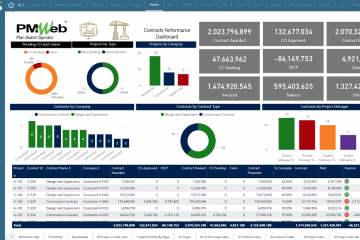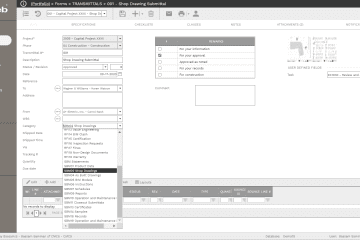Similar to any type of profession in any industry, for individuals who are being considered for leadership roles, technology awareness including familiarity with construction project management software, will always be one of the criteria used to shortlist candidates, especially with the new practices of Working from Home and Social Distancing being here to stay. Of course, proven experience, knowledge, and personal characteristics always have more weight when it comes to evaluating candidates, nevertheless, technology could be, many times, what provides the extra points to make a candidate more preferred than others. During the post-COVID-19 pandemic era, whether there are fewer or even more capital projects to deliver, technology knowledge will become a critical factor for hiring the next project and program managers.
Needless to say, technology awareness and experience must be relevant to the considered role. For example, a financial controller needs to have knowledge of accounting and ERP solutions, a project designer needs to have knowledge of building information modeling (BIM) solutions, a project planner needs to have knowledge of planning and scheduling software and a project or program construction manager needs to have PMIS Awareness.
A project management information system (PMIS) is defined as a solution that enables managing, monitoring, evaluating, and reporting all aspects needed to manage the delivery of capital construction projects and programs. Internationally recognized professional project management best practices and standards have identified those aspects as project scope, schedule, cost, quality, human resources, communications, risk, procurement, stakeholders, health, safety and environment (HSE), sustainability, claims, financial and the integration between all those aspects. In addition, a PMIS should enable managing the complete capital project life cycle phases including planning, design tender, design phase stages of concept, schematics, design development (30%, 60, 90%, and 100%), and construction documents, construction tender, construction, testing and commissioning, and handover and closeout. Further, a PMIS should enable managing a single project, program of projects as well and project portfolio.
One of those Project Management Information System (PMIS) solutions is PMWeb, which comes ready with many of the processes needed to manage capital construction projects. This construction project management software features a custom form builder that allows the creation of all other needed processes. For each process transaction, supportive documents and links to relevant records and imported MS Outlook email can be added. To enforce accountability and map the execution responsibilities for each process in accordance with the project’s Responsibility Assignment Matrix (RAM), workflows to identify the tasks needed to submit, review, support, inform, approve, or reject a transaction of each project management process needs to be created. Workflow steps identify the duration for each step and the sequence for performing them. Further, rules need to be added to the workflow to enforce the project’s approval authority levels. Those workflow steps can be also linked to DocuSign to enable the use of digital signatures.
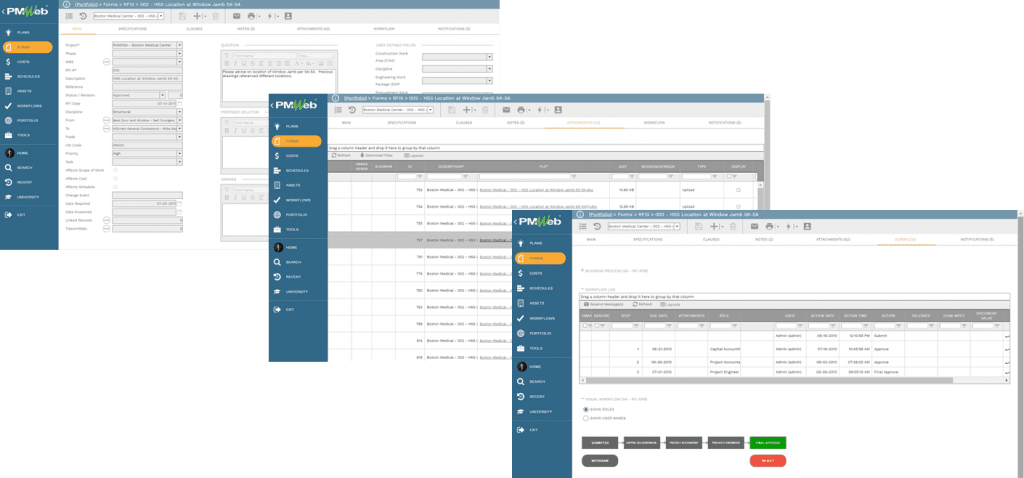
Having a workflow assigned to project management processes gives the project or program manager the real-time ability to monitor and evaluate all delayed actions by each individual from all entities involved in the project delivery. The project or program manager will have a report that details each project management process with the workflow tasks that are either delayed, due, or yet to be completed. For example, PMWeb comes ready with a default report that lists all those workflow tasks. Many PMWeb clients have designed their workflow reports where delayed actions are colored in Red, due actions are colored in Cyan, and those that have yet to become due are colored in Green. The report can be further improved by adding visuals to summarize actions status.
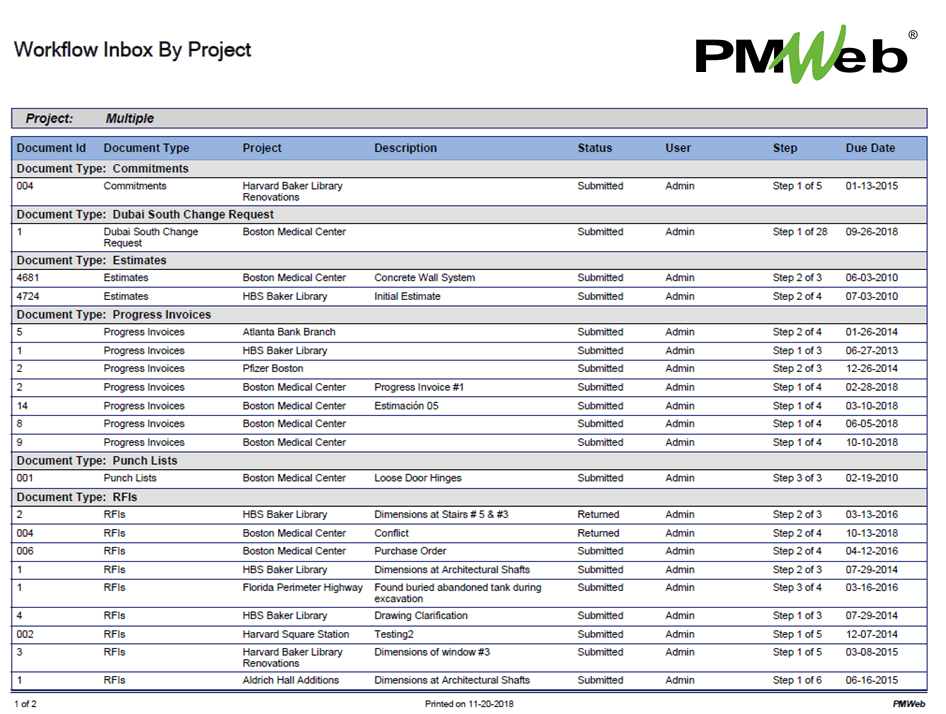
For some of the project management processes managed in a PMIS, there is a need to formally communicate those processes. Therefore, many projects could have the requirement to print, wet-sign, stamp, and share those communications. A PMIS should have the ability to design and produce the output form for each transaction in any desired format to enforce the project’s formal communication requirements. PMWeb report writer allows the creation of all those forms that could vary between one project or program and another. Those output forms can also be configured to be automatically, and digitally signed using DocuSign.
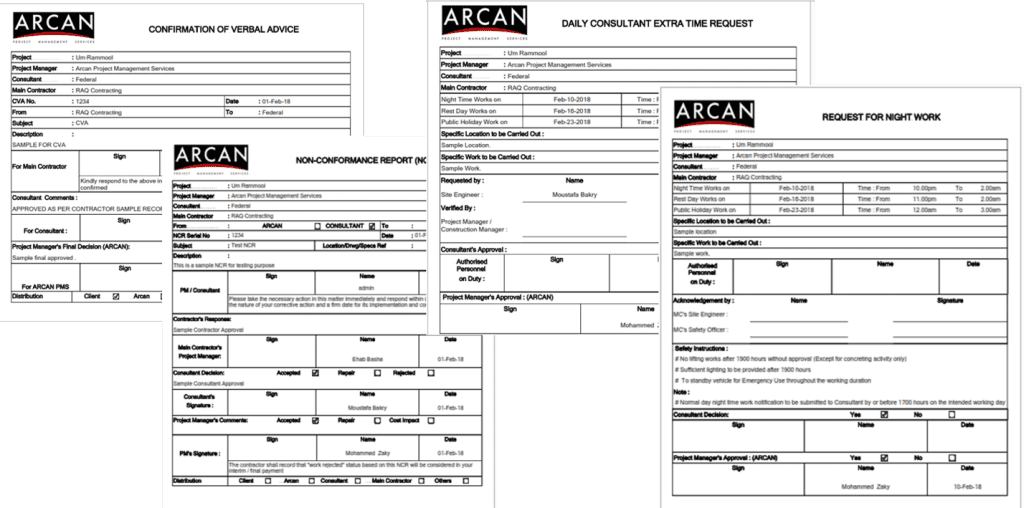
Unlike other types of projects, capital projects require involving many contractually independent entities when it comes to executing those projects. Those entities could include the Project Owner, Project End User, Design Consultants and Engineers, Cost Consultants, Program Management Consultants, Project Management Consultants, Site Supervision Consultants, Prime Contractors, Subcontractors, Suppliers, Banks, and Funding Agencies among others. Access rights and permissions for those entities and the individuals employed by those entities to access the PMIS and the data and documents captured and stored in the PMIS depend on the project management plan and contract documents. Some of those individuals and other project stakeholders would need to access the PMIS, which is an essential construction project management software, from different locations across the globe as well as the construction site.
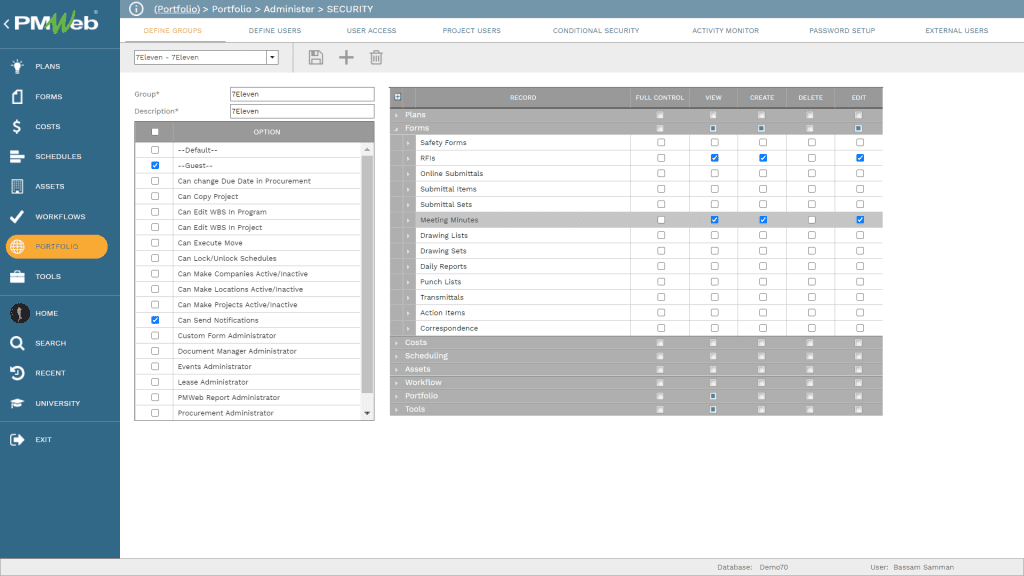
A PMIS usually includes a massive volume of project data and documents that are considered to be critical and must be stored and protected as per the Project Owner’s data protection and business continuity requirements, which also might be influenced by the country’s regulations and compliance requirements for data protection. Therefore, most of the time, a PMIS solution and captured data and documents should be stored at the Project Owner’s own data center or at an approved third-party data center located within the country. The Project Owner will have the ultimate control over who can access the stored data and documents and when to archive and store these data and documents.
A PMIS solution like PMWeb enables the Project Owner to select the hosting solution that best suits their compliance requirements, which could be on-premise or SaaS with a dedicated server. This also enables the Project Owner to decide on whether access to the PMIS should be only allowed through secured VPN networks or not.
Of course, no one would expect that the project or program manager will be personally involved in managing the tens of thousands of project management transactions that occur during the project delivery life cycle phases. Nevertheless, project and program managers need to have real-time access to the project management processes that matter to them so they can monitor and evaluate the performance of those processes. A PMIS needs to have the functionality to design those reports which could include data tables and visuals using the data captured in the PMIS. A PMIS should also allow dedicated business intelligence and data visualization tools like MS Power BI to access the PMIS data to enable analyzing the data to provide the project or program manager with the insight to make better and faster-informed decisions.
PMWeb comes ready with its own business intelligence report writer and enables third-party business intelligence and data visualization tools to have access to the captured data in accordance with the set security profiles. Tabular and graphical reports can be designed in the desired form and format required by the Project Owner.
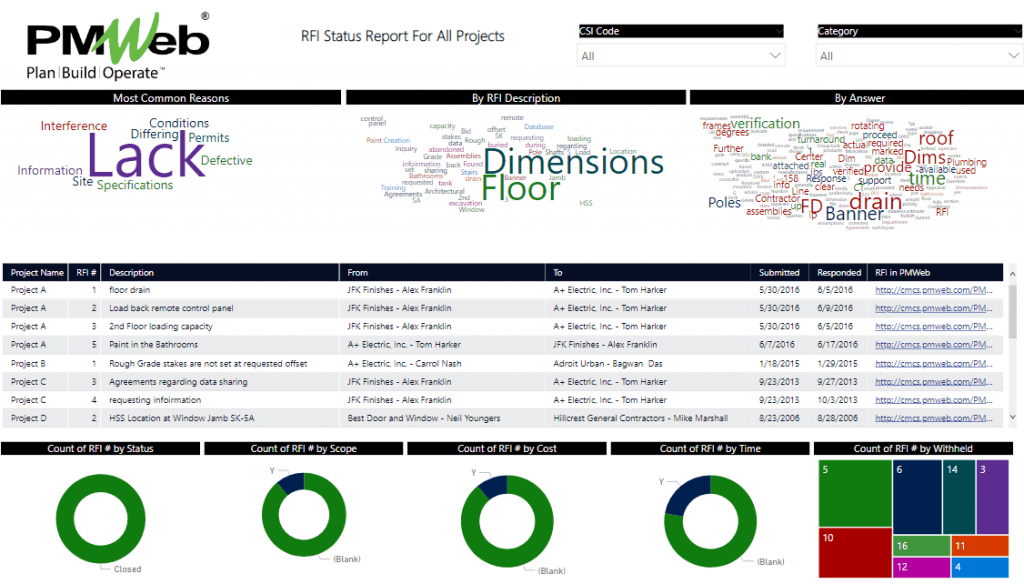
In addition, one of the most critical and demanding tasks of a project or program manager is to communicate the project or program performance status and issues that are impacting the project or program performance with executive stakeholders. The quality and trustworthiness of the reported information are of great importance as any false or incorrect performance reporting will create mistrust between those stakeholders and the project or program management team, which could lead to losing the very much-needed support and sponsorship which is usually very hard to regain once it’s lost.
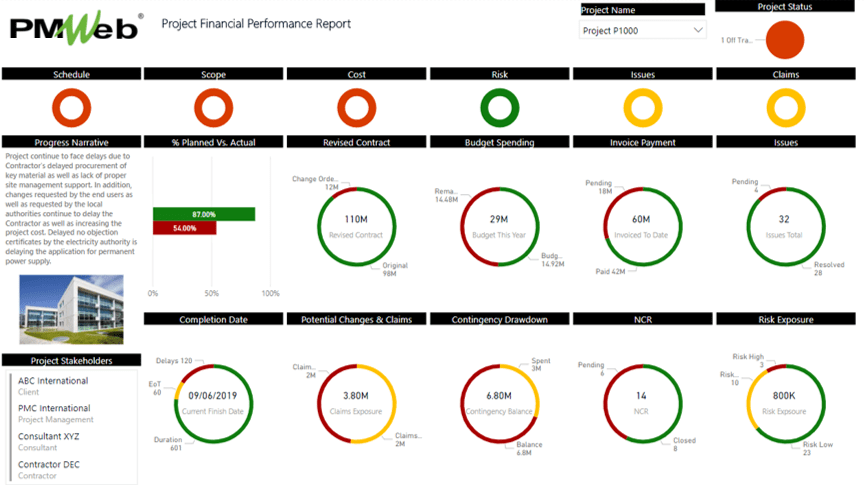
For program managers who could be involved in managing infrastructure programs that could include projects that are spread across the country or different countries, there is also a need to visualize the geographical location of those projects. Those usually include railway, metro, pipeline, highway, power transmission, and other types of infrastructure projects.


